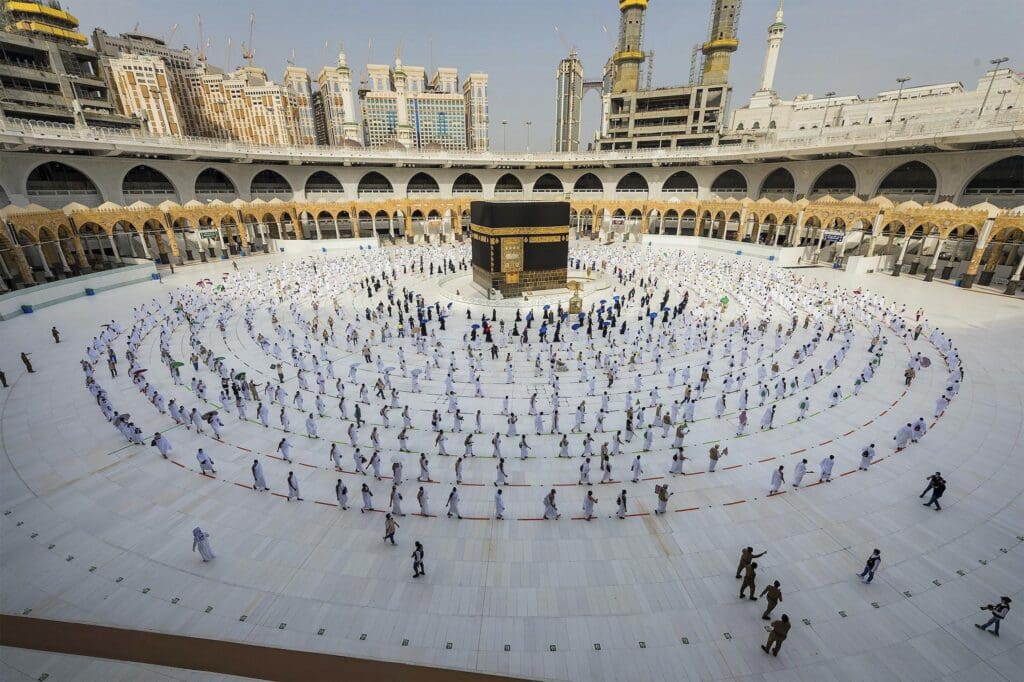Saudi Arabia has changed its decadeslong rule that mandated single women be accompanied by a male relative when performing an Islamic pilgrimage, facilitating the participation of thousands of single Muslim women in the Hajj in 2023.
The new rules don’t apply just during the Hajj. Women can also perform the Umrah, known as the “lesser pilgrimage,” or other routine pilgrimages such as ziyarat that can be undertaken any time of the year to Islamic holy sites, without a “mahram,” or male guardian.
The fact that women can now travel unaccompanied is part of a campaign by the political leadership of Saudi Arabia to improve the rights of women in the kingdom, which Western societies view as oppressive.
My research looks at issues of identity and “covenantal pluralism,” which refers to the mutual obligations that different faith communities have toward one another to support the pursuit of each one’s spiritual truth. I focus on the geographical area that encompasses the Indian Ocean, and I argue that these changes need to be viewed within a larger historical context and as they relate to Muslim women’s engagement with the sacred sites of Islam.
There is no Quranic injunction against women’s traveling alone. Nevertheless, in some patriarchal societies where sexual harassment is common, restrictions are put on women irrespective of religious affiliation. Currently, Islamic medieval-era injunctions are applied in Taliban-controlled Afghanistan.
However, Saudi Arabia is an exception. Conservative Sunni Muslim countries often see the kingdom, the birthplace of Islam, as the bulwark against Western secularization. Medieval Islamic laws, such as capital punishment for apostasy, are used to give an appearance of authoritative piety in present times.
Indeed, the cities of Mecca and Medina are visible manifestations of piety. To enter the holy cities is to be transported into a ritual space of sacred time based on the Muslim call to prayer, in which pilgrims from around the world unite in the idealized Prophetic vision of a nation of faith. It is not a world of punctual appointments set by a work schedule. Rather, worshippers serve God through devotion in prayer in accordance with the ancient Islamic prayer timings set by the rhythm of the Sun and Moon.
Colonization created a dichotomy within the world where Islam was often seen to be the opposite of the values of the West. Keeping women segregated from male worshippers, and viewing that separation as an expression of piety, is part of the rejection of Western norms while legitimizing the Islamic credentials of the Saudis both domestically and internationally.
Generally in mosques around the world, women and men worship separately. To some it may appear to violate the norms of Western egalitarianism, but it’s an ancient practice meant to encourage a spiritual intimacy and fellowship.
Until now, single women who did not have a male relative to escort them to the Two Holy Mosques – Al Masjid Al Haram in Mecca and the Prophet’s Mosque in Medina – would join an organized tour group of women. Their accommodations, meals, sermons and prayers would be organized together.
Interestingly, the holiest site in Islam – the mosque in Mecca – is circular, and historically men and women have worshipped openly together with few, if any, barriers.
These barriers, erected for women in Saudi Arabia in the 20th century, are being removed in accordance with the older prophetic tradition of women’s independence. For example, the first wife of the Prophet, Khatija, was an independent businesswoman who initially hired the Prophet as an employee for her trading caravans.
What is also important to consider is that whereas the Hajj is the preeminent Muslim pilgrimage, additional sacred sites exist for Shiite pilgrimage in countries such as Iran, Iraq and Syria. In these countries there is no mahram rule, though the threat of violence in Iraq and Syria means that both male and female pilgrims who visit from abroad come in groups.
Islamic pilgrimages are global gatherings of Muslims organized into groups, communities and families in which the individual’s identity is a dynamic one. The ultimate truth in Islam is the unity of God, and a Muslim pilgrimage is a manifestation of that unity through integration and service to the community. In this integration, the individual ego is subsumed through a communal religious experience, which can be ecstatic.
Additionally, Islam is a religion of right action in which individuals find realization by integrating into the community. The communal model of pilgrimage helps them go through a physically demanding schedule of ritual observance and creates camaraderie, that continues beyond the pilgrimage.
The changes to the mahram rule allowed single Muslim women to join the Hajj pilgrimage in 2023. Over 4,000 women from India performed the Hajj without a male guardian. Nonetheless, community participation remains important, and most women do not actually travel alone. A majority of women join groups that share the same language, rituals and cuisine to facilitate navigation of the foreign world of Muslim religious tourism.
The reshaping, reinterpretation and reconstruction of Islamic pilgrimages has been going on for centuries; this time, women are leading it.
This article is republished from The Conversation, an independent nonprofit news site dedicated to sharing ideas from academic experts. If you found it interesting, you could subscribe to our weekly newsletter.
Read more: Muslims protesting against LGBTQ+ pride are ignoring Islam’s tradition of inclusion The Muslim Hajj: A spiritual pilgrimage with political overtones
Iqbal Akhtar does not work for, consult, own shares in or receive funding from any company or organization that would benefit from this article, and has disclosed no relevant affiliations beyond their academic appointment.
